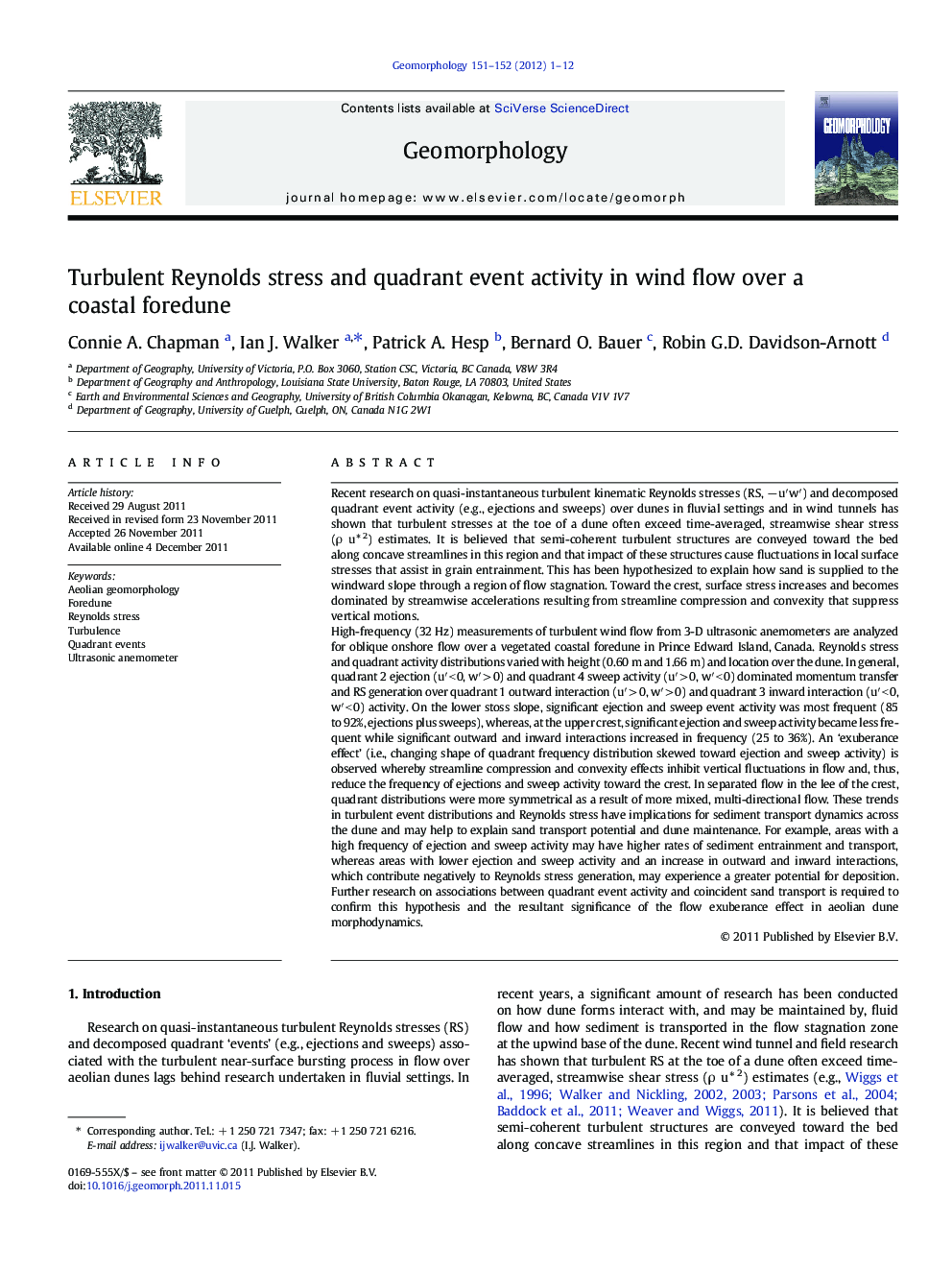| کد مقاله | کد نشریه | سال انتشار | مقاله انگلیسی | نسخه تمام متن |
|---|---|---|---|---|
| 4685184 | 1635483 | 2012 | 12 صفحه PDF | دانلود رایگان |

Recent research on quasi-instantaneous turbulent kinematic Reynolds stresses (RS, − u′w′) and decomposed quadrant event activity (e.g., ejections and sweeps) over dunes in fluvial settings and in wind tunnels has shown that turbulent stresses at the toe of a dune often exceed time-averaged, streamwise shear stress (ρ u * 2) estimates. It is believed that semi-coherent turbulent structures are conveyed toward the bed along concave streamlines in this region and that impact of these structures cause fluctuations in local surface stresses that assist in grain entrainment. This has been hypothesized to explain how sand is supplied to the windward slope through a region of flow stagnation. Toward the crest, surface stress increases and becomes dominated by streamwise accelerations resulting from streamline compression and convexity that suppress vertical motions.High-frequency (32 Hz) measurements of turbulent wind flow from 3-D ultrasonic anemometers are analyzed for oblique onshore flow over a vegetated coastal foredune in Prince Edward Island, Canada. Reynolds stress and quadrant activity distributions varied with height (0.60 m and 1.66 m) and location over the dune. In general, quadrant 2 ejection (u′ < 0, w′ > 0) and quadrant 4 sweep activity (u′ > 0, w′ < 0) dominated momentum transfer and RS generation over quadrant 1 outward interaction (u′ > 0, w′ > 0) and quadrant 3 inward interaction (u′ < 0, w′ < 0) activity. On the lower stoss slope, significant ejection and sweep event activity was most frequent (85 to 92%, ejections plus sweeps), whereas, at the upper crest, significant ejection and sweep activity became less frequent while significant outward and inward interactions increased in frequency (25 to 36%). An ‘exuberance effect’ (i.e., changing shape of quadrant frequency distribution skewed toward ejection and sweep activity) is observed whereby streamline compression and convexity effects inhibit vertical fluctuations in flow and, thus, reduce the frequency of ejections and sweep activity toward the crest. In separated flow in the lee of the crest, quadrant distributions were more symmetrical as a result of more mixed, multi-directional flow. These trends in turbulent event distributions and Reynolds stress have implications for sediment transport dynamics across the dune and may help to explain sand transport potential and dune maintenance. For example, areas with a high frequency of ejection and sweep activity may have higher rates of sediment entrainment and transport, whereas areas with lower ejection and sweep activity and an increase in outward and inward interactions, which contribute negatively to Reynolds stress generation, may experience a greater potential for deposition. Further research on associations between quadrant event activity and coincident sand transport is required to confirm this hypothesis and the resultant significance of the flow exuberance effect in aeolian dune morphodynamics.
Journal: Geomorphology - Volumes 151–152, 15 May 2012, Pages 1–12